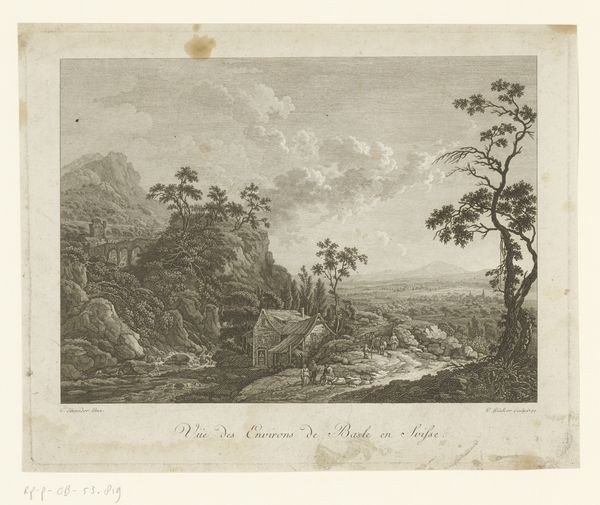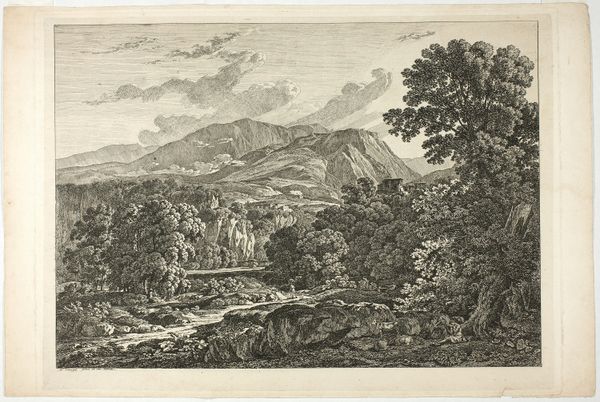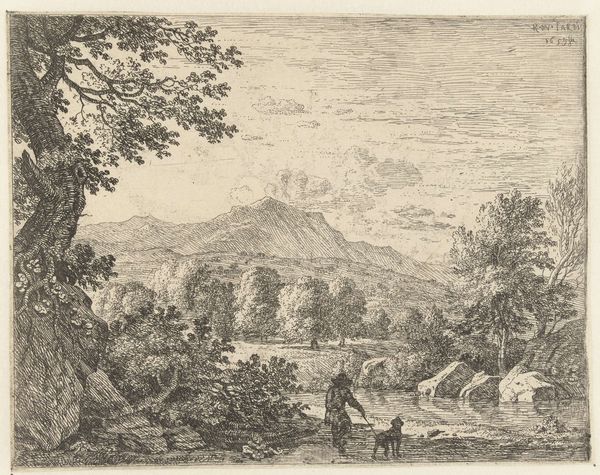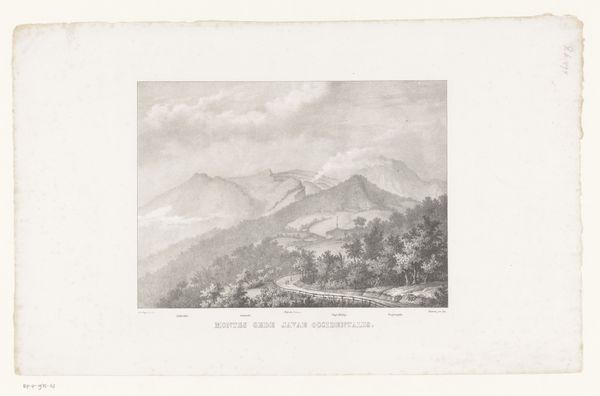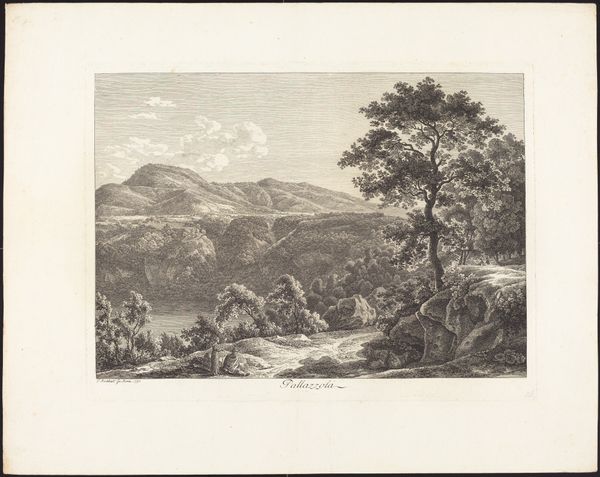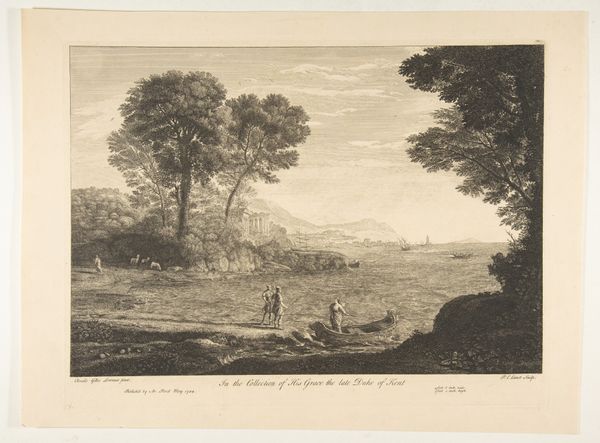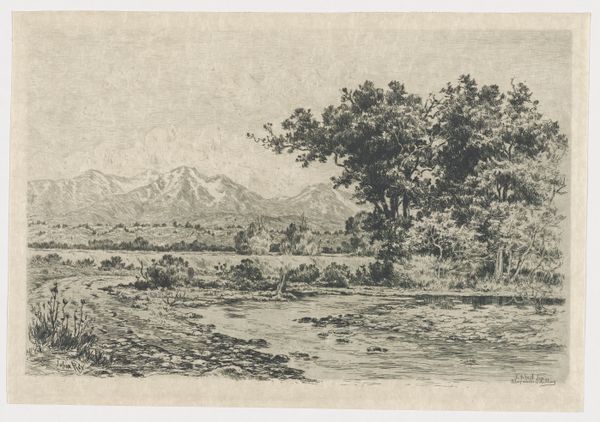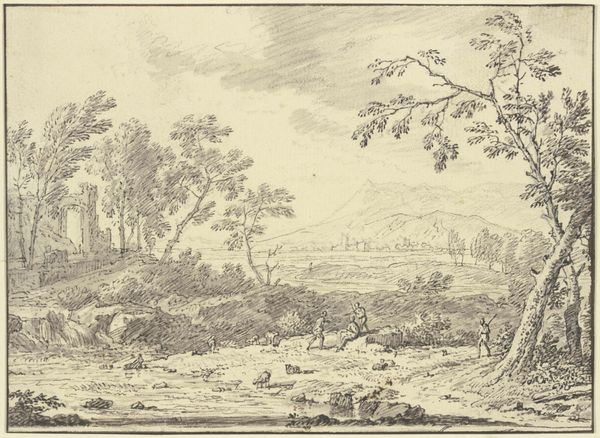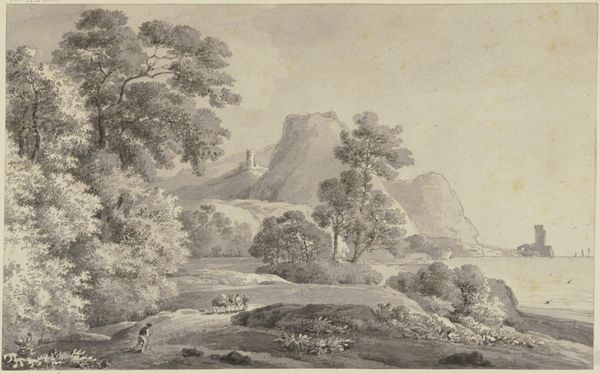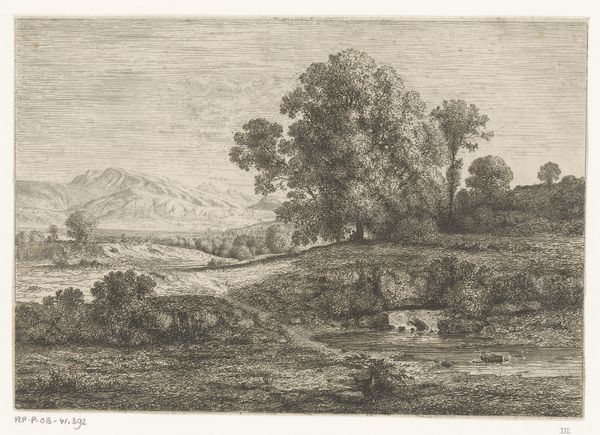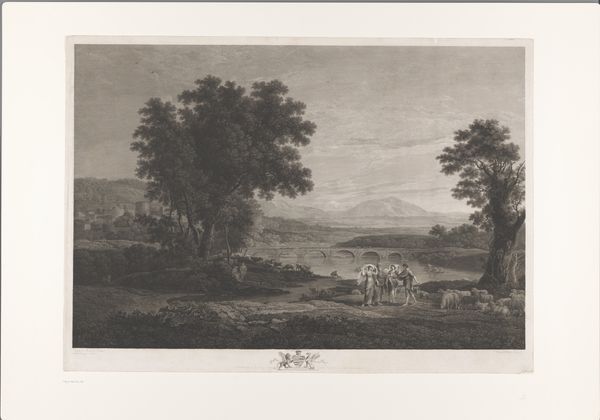
print, engraving
# print
#
old engraving style
#
landscape
#
romanticism
#
engraving
Dimensions: plate: 20.9 x 25.7 cm (8 1/4 x 10 1/8 in.) sheet: 22.5 x 27.2 cm (8 7/8 x 10 11/16 in.)
Copyright: National Gallery of Art: CC0 1.0
Christoph Nathe’s “Landeskrone Mountain near Görlitz” is an etching, meaning it was made by drawing into a wax-covered metal plate with a sharp needle, then bathing it in acid. Look closely, and you'll notice the crisp precision of the lines that define the trees and the subtle gradations of tone that give depth to the mountain. Etching excels at this kind of detail, which made it ideal for landscapes and other scenes that demanded accuracy. The printmaking tradition that Nathe was part of allowed for the wide distribution of images. Etchings like this one played a crucial role in shaping perceptions of the world. They made landscapes accessible to a broad audience, fostering appreciation for nature and reinforcing national identity. Consider the labor involved – from the mining of the metal to the skilled handiwork of the etcher. This print isn't just a picture; it’s a testament to the collaborative nature of art and its entanglement with the means of production. By recognizing the materials and processes behind it, we gain a deeper understanding of its historical and cultural significance.
Comments
No comments
Be the first to comment and join the conversation on the ultimate creative platform.
